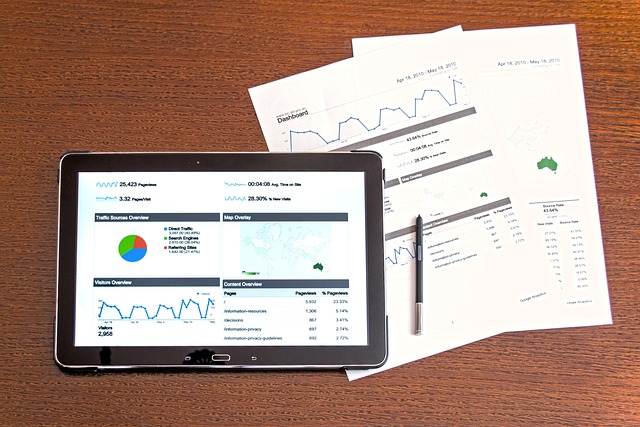AI-assisted menu optimization is transforming ghost kitchens by leveraging advanced algorithms and data analytics for efficient decision-making in the dynamic food delivery landscape. Through AI route delay forecasting, systems predict traffic patterns, delivery times, and order priorities, optimizing kitchen operations. This technology ensures accurate demand forecasting, minimizes inventory waste, reduces costs, enhances customer satisfaction with timely deliveries, and streamlines kitchen workflows during peak hours. Specifically, smart menu choices based on predictive analytics and AI route delay forecasting ensure popular dishes, anticipate demand fluctuations, optimize preparation schedules, and adjust delivery routes for prompt, fresh food arrival.
In the dynamic world of food delivery, ghost kitchens—or cloud kitchens—are optimizing their operations with Artificial Intelligence (AI). This article explores how AI-assisted menu optimization in these culinary hubs is revolutionizing service. We delve into key strategies such as AI route delay forecasting, enhancing efficiency and customer satisfaction. Additionally, we uncover smart menu choices guided by predictive analytics, demonstrating the transformative power of technology in ghost kitchen management. Discover how these innovations are shaping the future of food delivery.
- Understanding AI-Assisted Menu Optimization in Ghost Kitchens
- AI Route Delay Forecasting: Enhancing Efficiency and Customer Satisfaction
- Strategies for Implementing Smart Menu Choices Based on Predictive Analytics
Understanding AI-Assisted Menu Optimization in Ghost Kitchens

AI-assisted menu optimization is transforming ghost kitchens, enabling efficient decision-making in a dynamic food delivery landscape. By leveraging advanced algorithms and data analytics, AI systems analyze various factors such as customer preferences, historical sales data, and real-time trends to suggest optimal menu items and pricing strategies. This technology goes beyond simple recipe recommendations; it predicts demand with remarkable accuracy, ensuring that ghost kitchens can efficiently manage inventory, minimize waste, and reduce costs.
The heart of this process lies in AI route delay forecasting, which considers traffic patterns, delivery times, and order priorities to optimize kitchen operations. By understanding the potential delays in food delivery, AI algorithms can dynamically adjust menu offerings, prioritizing dishes with shorter preparation times or suggesting alternative options that customers might prefer during peak hours. This proactive approach enhances customer satisfaction by ensuring timely deliveries while streamlining kitchen workflows for maximum efficiency.
AI Route Delay Forecasting: Enhancing Efficiency and Customer Satisfaction

AI-powered route delay forecasting is transforming the food delivery industry by offering a strategic edge to ghost kitchens and couriers. By leveraging machine learning algorithms, AI systems can analyze historical data, real-time traffic patterns, and weather conditions to predict potential delays with remarkable accuracy. This technology enables efficient route planning, minimizing idle time for couriers and ensuring timely deliveries.
With accurate delay forecasts, ghost kitchen operators can optimize their menu offerings, suggesting alternatives or adjusting prices based on expected delivery times. Customers benefit from more precise estimated arrival times, leading to enhanced satisfaction as they receive their orders when promised, reducing the frustration often associated with late deliveries.
Strategies for Implementing Smart Menu Choices Based on Predictive Analytics

Implementing smart menu choices is a game-changer for ghost kitchens, allowing them to optimize their offerings based on predictive analytics. By analyzing historical sales data, customer preferences, and even external factors like weather and traffic, AI algorithms can forecast popular dishes and anticipate demand fluctuations. This enables kitchen operators to make informed decisions about menu composition, ensuring that popular items are always in stock and reducing the risk of over or under-production.
For instance, predictive models can identify peak dining hours and adjust the preparation schedule accordingly. They can also account for AI route delay forecasting, optimizing delivery routes to minimize time spent on the road. This not only reduces operational costs but also ensures that food arrives fresh and hot at the customer’s doorstep, enhancing overall satisfaction.
AI-driven menu optimization in ghost kitchens is revolutionizing the food delivery experience. By leveraging predictive analytics and AI route delay forecasting, kitchen operators can significantly enhance efficiency, reduce wait times, and improve customer satisfaction. Implementing smart menu choices based on data-driven insights allows for better inventory management, cost reduction, and tailored offerings. As the ghost kitchen sector continues to evolve, embracing these technologies will be key to staying competitive and meeting the high expectations of modern consumers.
